Modellsimulation in Webots und Simulationen mit ROS2
Autoren: Arfat Kamal
Betreuer: Prof. Schneider
Art: Praxissemester
Projektlaufzeit: 02.11.2021-20.02.2022
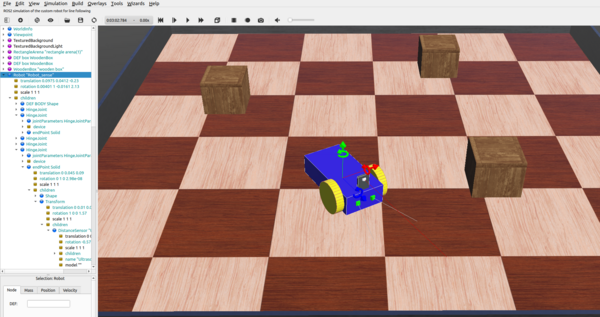
Introduction
In order to simulate, a 3D model of a 4 wheeled robot is created inside Webots first. That robot is simulated with a controller which is written in C inside the text editor of Webots. That robot is later imported in Webots in Ubuntu and customised with a servo, an ultrasonic sensor and a caster wheel to resemble the Alphabot robot of our project. Finally, it is programmed with ROS2 and Python to run it in Webots as an obstacle avoiding robot.
Overview
Documentation
3D Model of a 4-Wheeled-Robot
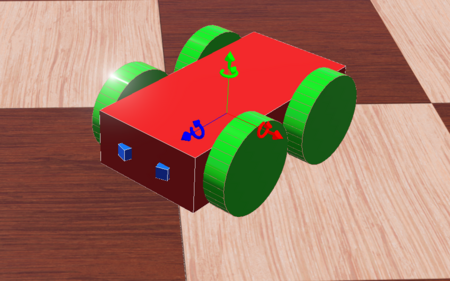
A 4-Wheeled-Robot is created in Webots from scratch by following tutorial 6 in Cyberbotics. The robot consists of a body, 4 wheels and two distance sensors(IR sensors). Figure 2. above shows the 3D view of the end result.
Co-ordinate System
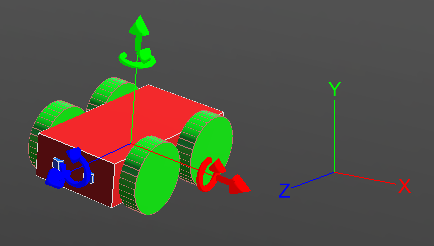
The co-ordinate system of the robot works exactly as the picture above depicts. The red arrow shows the X-axis and it defines the right and left of the robot. The green arrow shows the Y-axis and it can be used to move the robot upwards and downwards. The blue arrow is the Z-axis and it is related to forward and backward movement of the robot. By default the co-ordinates system is turned off in Webots. It can be turned on by following these steps to show the X, Y and Z axis:
View >> Optional Rendering >> Show Coordinate System
Or by simply pressing Ctrl+F1.
Top View in a Grid
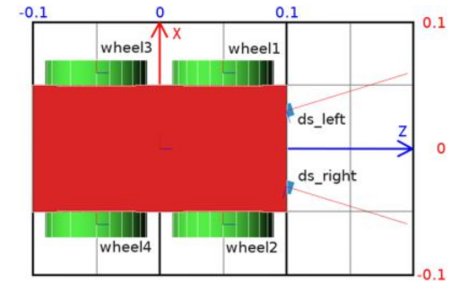
The figure above shows the top view of the robot. It is inside a grid to understand the dimensions of the robot. The dimension of the grid is 0.2 × 0.3 meters.
High Level Representation
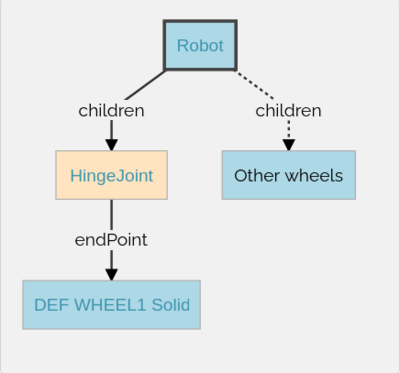
The picture above depicts the high level representation of the 4 wheeled robot. Here, Robot is the base node. The Robot node has four HingeJoint nodes. The HingeJoints are used as anchors to connect the wheels to the body of the robot. Each HingeJoint has a Solid node as endPoint. The Solid nodes are then modified into the wheels of the robot.
Low Level Representation
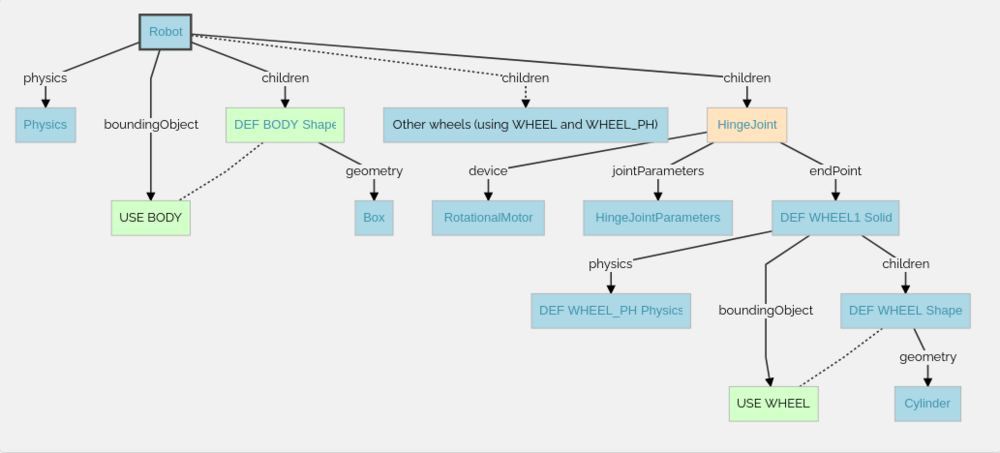
The figure above demonstrates the structure of the robot in details, how the 3D model is modeled in Weobts using the scene tree.
Representation of a HingeJoint
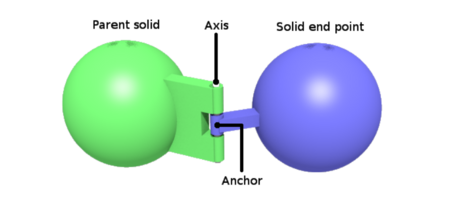
In Webots, whenever rotary or linear motion is used, we must use a HingeJoint. In our case, since we are using RotationalMotor for moving the wheels, HingeJoints are being used to anchor the wheels to the body. As we can see in the photo, Parent solid is in our case the body of the robot and wheels are attached as solid end points. In the HingeJoint node we also use RotationalMotor as a Device for moving the robot.
Sensors
In our case, two IR sensors are used to measure distance in the beginning for the 4-Wheeled-Robot. In Webots these sensors are found as DistanceSensors. There are four type of distance sensors in Webots. They are -
- Generic,
- Infra-red,
- Sonar,
- Laser.
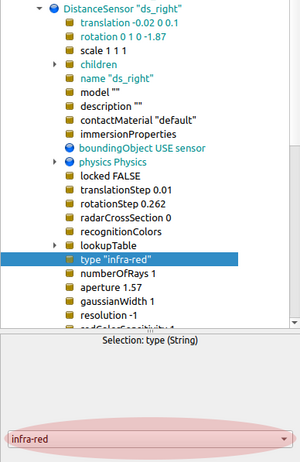
In Webots, these different types of distance sensors can be found inside DistanceSensor Node which is under the Children node of the Robot base node. There is an example in Figure. 8 that shows how to change between different types of Distance Sensors by selecting the 'type' field of DistanceSensor from the scene tree. Later when we use Ultrasonic Sensor for avoiding obstacles, we change the type of the DistanceSensor to Sonar.
Creating the 3D Model
Body
The first step to create the 3D model of the robot is to make the body. In order to create the body of the robot at first we add a Robot node as a base node from the scene tree. Then inside the Robot node we have to go inside the Children node. Inside the Children node we again go inside the Base nodes. From Base nodes we add a Shape inside the scene tree. This shape should be transformed into the body of the robot.
Appearance
First we have to change the appearance of the shape. To do that we go inside the Shape from the scene tree and click on Appearance and choose PBRAppearance. Inside the Appearance Node, We can change the color by changing the baseColor which is in RGB format. We can also change the Metalness to 0 and the Rougness to 1 to make it look better.
Geometry
We need to give a geometry to the Shape of the robot. To do that we have to go inside the Shape Node and click on 'geometry'. Then we go inside Base nodes and choose Box since the body of our Robot has the geometry of a box. We can also change the size of the box from 'geometry'. We simply select the 'size' field which is inside 'geometry'. There we can see three fields for changing the size of the box with x,y and z values. For our case, x is 0.1 m, y is 0.05 m and z is 0.2 m.
We have this 'DEF' option in Webots to Define something under a certain name. Which is helpful sometimes when we want to use the same values of something for something else, so we do not have to recreate everything from scratch. This is also helpful when we want to use a shape or something as a bounding object. In our case we defined the Shape that we turned into the body of the robot as 'Body'. We can do this by selecting the Shape node and writing 'Body' inside the empty field after 'DEF'. The 'DEF' field can be found right under the scene tree.
Once we define the Shape as the Body of the robot, we can select it as the bounding object of our robot. We use bounding object so other solid items from the world do not go inside the robot. We can do this by selecting the boundingObject field which is a part of the Robot base node. Once we select the boundingObject, We can go inside Use and select the box shape that we created and defined as 'Body'. Since the body of the robot is the biggest part of our robot, we choose this as the bounding object of the Robot Node.
And lastly we change the physics of the Robot Node from null to physics.
Demo-Programs
Software
Summary
Weiterführende Links
→ zurück zum Hauptartikel: Praxissemester Projektteam WS2021